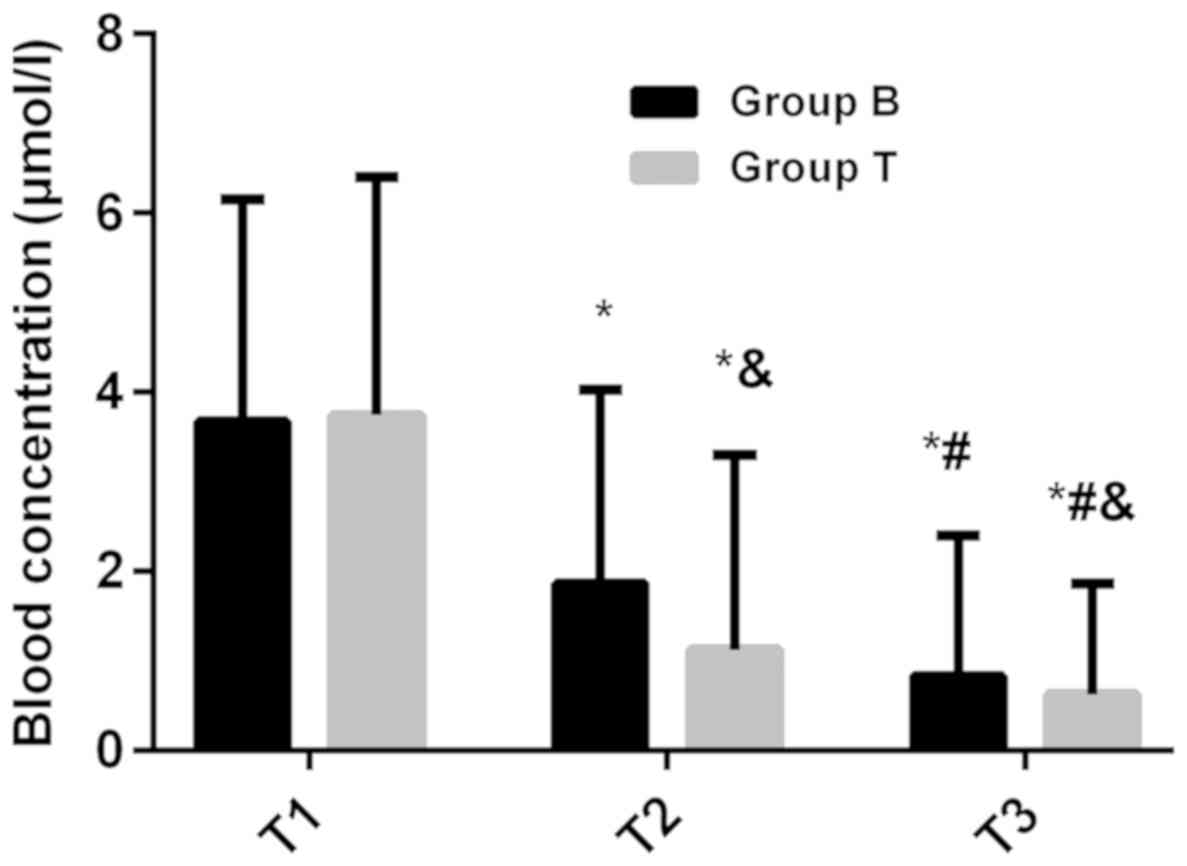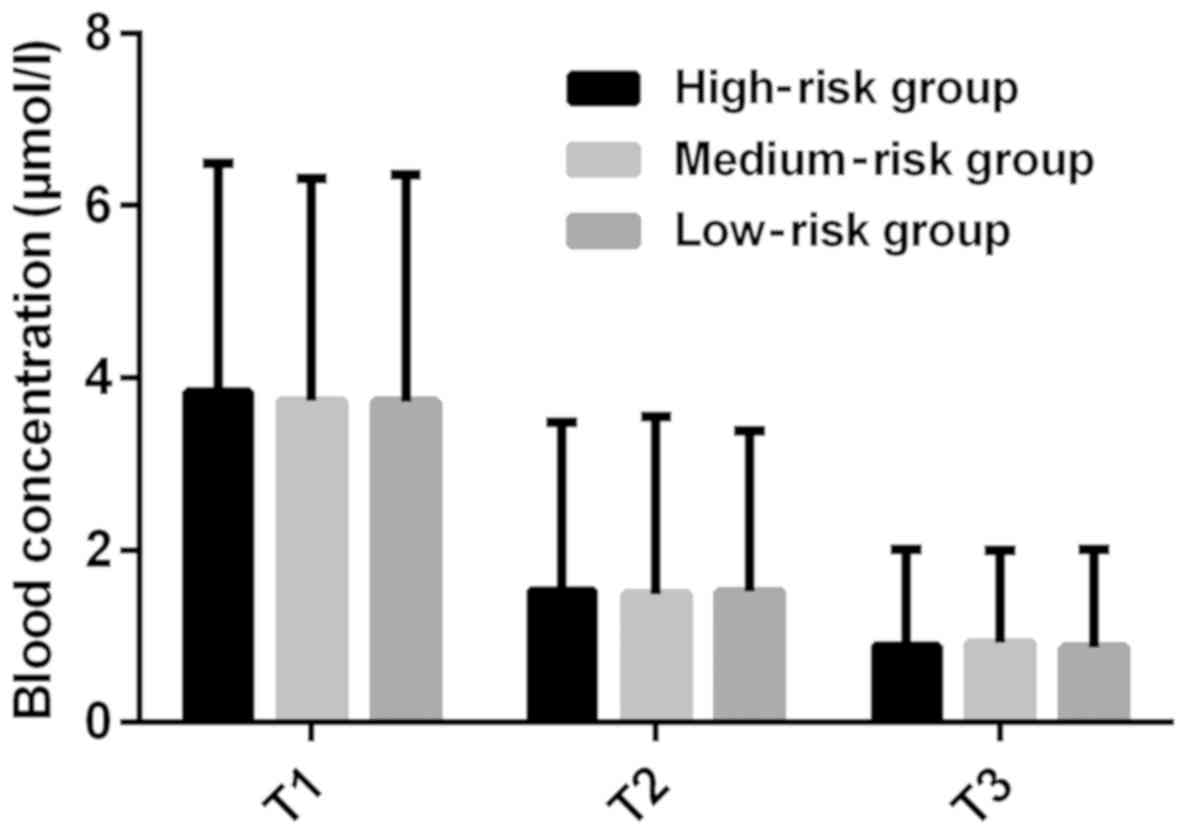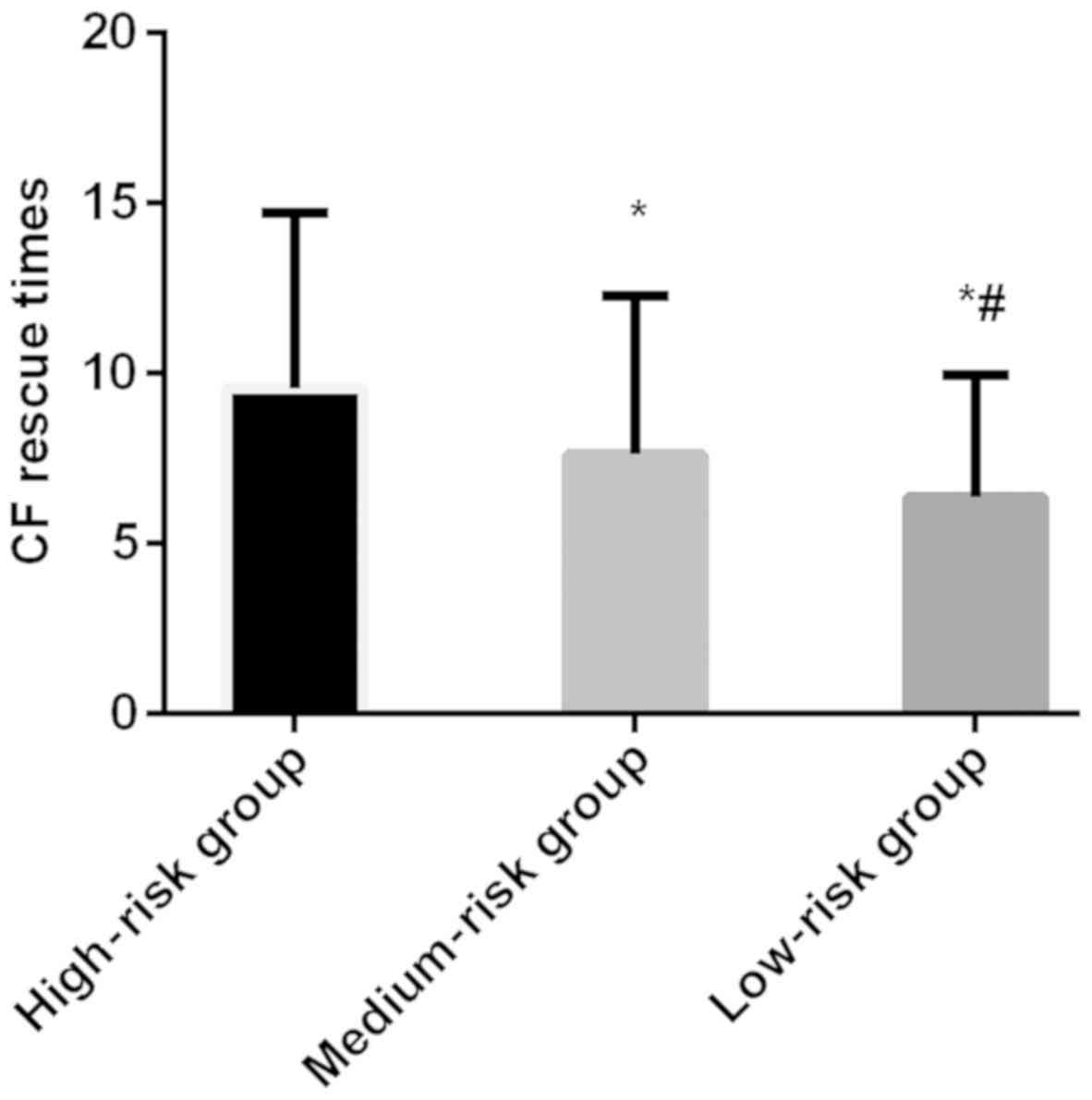|
1
|
Wang W, Zimmerman G, Huang X, Yu S, Myers
J, Wang Y, Moreton S, Nthale J, Awadallah A, Beck R, et al:
Aberrant Notch signaling in the bone marrow microenvironment of
acute lymphoid leukemia suppresses osteoblast-mediated support of
hematopoietic niche function. Cancer Res. 76:1641–1652. 2016.
View Article : Google Scholar : PubMed/NCBI
|
|
2
|
Nicolato A, Nouér SA, Garnica M, Portugal
R, Maiolino A and Nucci M: Invasive fungal diseases in patients
with acute lymphoid leukemia. Leuk Lymphoma. 57:2084–2089. 2016.
View Article : Google Scholar : PubMed/NCBI
|
|
3
|
El-Jawahri A, Li S, Ballen KK, Cutler C,
Dey BR, Driscoll J, Hunnewell C, Ho VT, McAfee SL, Poliquin C, et
al: Phase II trial of reduced-intensity busulfan/clofarabine
conditioning with allogeneic hematopoietic stem cell
transplantation for patients with acute myeloid leukemia,
myelodysplastic syndromes, and acute lymphoid leukemia. Biol Blood
Marrow Transplant. 22:80–85. 2016. View Article : Google Scholar : PubMed/NCBI
|
|
4
|
Duque-Afonso J, Lin CH, Han K, Wei MC,
Feng J, Kurzer JH, Schneidawind C, Wong SH, Bassik MC and Cleary
ML: E2A-PBX1 remodels oncogenic signaling networks in B-cell
precursor acute lymphoid leukemia. Cancer Res. 76:6937–6949. 2016.
View Article : Google Scholar : PubMed/NCBI
|
|
5
|
Fitzgerald JC, Weiss SL, Maude SL, Barrett
DM, Lacey SF, Melenhorst JJ, Shaw P, Berg RA, June CH, Porter DL,
et al: Cytokine release syndrome after chimeric antigen receptor T
cell therapy for acute lymphoblastic leukemia. Crit Care Med.
45:e124–e131. 2017. View Article : Google Scholar : PubMed/NCBI
|
|
6
|
Jacoby E, Nguyen SM, Fountaine TJ, Welp K,
Gryder B, Qin H, Yang Y, Chien CD, Seif AE, Lei H, et al: CD19 CAR
immune pressure induces B-precursor acute lymphoblastic leukaemia
lineage switch exposing inherent leukaemic plasticity. Nat Commun.
7:123202016. View Article : Google Scholar : PubMed/NCBI
|
|
7
|
Frey NV and Porter DL: Cytokine release
syndrome with novel therapeutics for acute lymphoblastic leukemia.
Hematology (Am Soc Hematol Educ Program). 2016:567–572. 2016.
View Article : Google Scholar : PubMed/NCBI
|
|
8
|
Ferreri AJ, Cwynarski K, Pulczynski E,
Ponzoni M, Deckert M, Politi LS, Torri V, Fox CP, Rosée PL, Schorb
E, et al International Extranodal Lymphoma Study Group (IELSG), :
Chemoimmunotherapy with methotrexate, cytarabine, thiotepa, and
rituximab (MATRix regimen) in patients with primary CNS lymphoma:
Results of the first randomisation of the International Extranodal
Lymphoma Study Group-32 (IELSG32) phase 2 trial. Lancet Haematol.
3:e217–e227. 2016. View Article : Google Scholar : PubMed/NCBI
|
|
9
|
Larsen EC, Devidas M, Chen S, Salzer WL,
Raetz EA, Loh ML, Mattano LA Jr, Cole C, Eicher A, Haugan M, et al:
Dexamethasone and high-dose methotrexate improve outcome for
children and young adults with high-risk B-acute lymphoblastic
leukemia: A report from Children's Oncology Group Study AALL0232. J
Clin Oncol. 34:2380–2388. 2016. View Article : Google Scholar : PubMed/NCBI
|
|
10
|
Schmiegelow K, Attarbaschi A, Barzilai S,
Escherich G, Frandsen TL, Halsey C, Hough R, Jeha S, Kato M, Liang
DC, et al Ponte di Legno toxicity working group, : Consensus
definitions of 14 severe acute toxic effects for childhood
lymphoblastic leukaemia treatment: A Delphi consensus. Lancet
Oncol. 17:e231–e239. 2016. View Article : Google Scholar : PubMed/NCBI
|
|
11
|
Krull KR, Cheung YT, Liu W, Fellah S,
Reddick WE, Brinkman TM, Kimberg C, Ogg R, Srivastava D, Pui CH, et
al: Chemotherapy pharmacodynamics and neuroimaging and
neurocognitive outcomes in long-term survivors of childhood acute
lymphoblastic leukemia. J Clin Oncol. 34:2644–2653. 2016.
View Article : Google Scholar : PubMed/NCBI
|
|
12
|
Asselin BL, Devidas M, Chen L, Franco VI,
Pullen J, Borowitz MJ, Hutchison RE, Ravindranath Y, Armenian SH,
Camitta BM, et al: Cardioprotection and safety of dexrazoxane in
patients treated for newly diagnosed T-cell acute lymphoblastic
leukemia or advanced-stage lymphoblastic non-Hodgkin lymphoma: A
report of the Children's Oncology Group Randomized Trial Pediatric
Oncology Group 9404. J Clin Oncol. 34:854–862. 2016. View Article : Google Scholar : PubMed/NCBI
|
|
13
|
Iparraguirre L, Gutierrez-Camino A, Umerez
M, Martin-Guerrero I, Astigarraga I, Navajas A, Sastre A, Garcia de
Andoin N and Garcia-Orad A: MiR-pharmacogenetics of methotrexate in
childhood B-cell acute lymphoblastic leukemia. Pharmacogenet
Genomics. 26:517–525. 2016. View Article : Google Scholar : PubMed/NCBI
|
|
14
|
Wojtuszkiewicz A, Raz S, Stark M, Assaraf
YG, Jansen G, Peters GJ, Sonneveld E, Kaspers GJ and Cloos J:
Folylpolyglutamate synthetase splicing alterations in acute
lymphoblastic leukemia are provoked by methotrexate and other
chemotherapeutics and mediate chemoresistance. Int J Cancer.
138:1645–1656. 2016. View Article : Google Scholar : PubMed/NCBI
|
|
15
|
Jabbour E and Kantarjian H: Chronic
myeloid leukemia: 2014 update on diagnosis, monitoring, and
management. Am J Hematol. 89:547–556. 2014. View Article : Google Scholar : PubMed/NCBI
|
|
16
|
Burnett AK, Russell NH, Hills RK, Hunter
AE, Kjeldsen L, Yin J, Gibson BE, Wheatley K and Milligan D:
Optimization of chemotherapy for younger patients with acute
myeloid leukemia: Results of the medical research council AML15
trial. J Clin Oncol. 31:3360–3368. 2013. View Article : Google Scholar : PubMed/NCBI
|
|
17
|
Hough R, Rowntree C, Goulden N, Mitchell
C, Moorman A, Wade R and Vora A: Efficacy and toxicity of a
paediatric protocol in teenagers and young adults with Philadelphia
chromosome negative acute lymphoblastic leukaemia: Results from
UKALL 2003. Br J Haematol. 172:439–451. 2016. View Article : Google Scholar : PubMed/NCBI
|
|
18
|
Hoelzer D, Bassan R, Dombret H, Fielding
A, Ribera JM and Buske C; ESMO Guidelines Committee, : Acute
lymphoblastic leukaemia in adult patients: ESMO Clinical Practice
Guidelines for diagnosis, treatment and follow-up. Ann Oncol. 27
Suppl 5:v69–v82. 2016.PubMed/NCBI
|
|
19
|
Liang DC, Yang CP, Liu HC, Jaing TH, Chen
SH, Hung IJ, Yeh TC, Lin TH, Lai CL, Lai CY, et al: NUDT15 gene
polymorphism related to mercaptopurine intolerance in Taiwan
Chinese children with acute lymphoblastic leukemia.
Pharmacogenomics J. 16:536–539. 2016. View Article : Google Scholar : PubMed/NCBI
|
|
20
|
Al-Ghobashy MA, Hassan SA, Abdelaziz DH,
Elhosseiny NM, Sabry NA, Attia AS and El-Sayed MH: Development and
validation of LC-MS/MS assay for the simultaneous determination of
methotrexate, 6-mercaptopurine and its active metabolite
6-thioguanine in plasma of children with acute lymphoblastic
leukemia: Correlation with genetic polymorphism. J Chromatogr B
Analyt Technol Biomed Life Sci. 1038:88–94. 2016. View Article : Google Scholar : PubMed/NCBI
|
|
21
|
Howard SC, McCormick J, Pui CH, Buddington
RK and Harvey RD: Preventing and managing toxicities of high-dose
Methotrexate. Oncologist. 21:1471–1482. 2016. View Article : Google Scholar : PubMed/NCBI
|
|
22
|
Carbonnel F, Colombel JF, Filippi J,
Katsanos KH, Peyrin-Biroulet L, Allez M, Nachury M, Novacek G,
Danese S, Abitbol V, et al: European Crohn's and Colitis
Organisation; Groupe d'Étude Thérapeutique des Affections
Inflammatoires Digestives: Methotrexate is not superior to placebo
for inducing steroid-free remission, but induces steroid-free
clinical remission in a larger proportion of patients with
ulcerative colitis. Gastroenterology. 150:380–388.e4. 2016.
View Article : Google Scholar : PubMed/NCBI
|
|
23
|
Yamanaka H, Tanaka Y, Takeuchi T, Sugiyama
N, Yuasa H, Toyoizumi S, Morishima Y, Hirose T and Zwillich S:
Tofacitinib, an oral Janus kinase inhibitor, as monotherapy or with
background methotrexate, in Japanese patients with rheumatoid
arthritis: An open-label, long-term extension study. Arthritis Res
Ther. 18:342016. View Article : Google Scholar : PubMed/NCBI
|
|
24
|
Gitlin AD, von Boehmer L, Gazumyan A,
Shulman Z, Oliveira TY and Nussenzweig MC: Independent roles of
switching and hypermutation in the development and persistence of B
lymphocyte memory. Immunity. 44:769–781. 2016. View Article : Google Scholar : PubMed/NCBI
|
|
25
|
Woessmann W, Seidemann K, Mann G,
Zimmermann M, Burkhardt B, Oschlies I, Ludwig WD, Klingebiel T,
Graf N, Gruhn B, et al BFM Group, : The impact of the methotrexate
administration schedule and dose in the treatment of children and
adolescents with B-cell neoplasms: A report of the BFM Group Study
NHL-BFM95. Blood. 105:948–958. 2005. View Article : Google Scholar : PubMed/NCBI
|
|
26
|
Conter V, Valsecchi MG, Buldini B,
Parasole R, Locatelli F, Colombini A, Rizzari C, Putti MC, Barisone
E, Lo Nigro L, et al: Early T-cell precursor acute lymphoblastic
leukaemia in children treated in AIEOP centres with AIEOP-BFM
protocols: A retrospective analysis. Lancet Haematol. 3:e80–e86.
2016. View Article : Google Scholar : PubMed/NCBI
|













